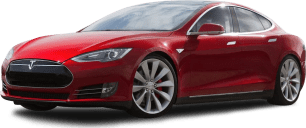Years ago, an international Skoda boss revealed to us that their brand offered, roughly speaking, 10 per cent more VW for 10 per cent less money and 10 per cent less technology.
So, a decade ago, a base Octavia cost less than the smaller Golf that it was derived from, but cruise control wasn’t standard (or operated via a stalk rather than the VW’s steering-wheel buttons) while the rear suspension featured simpler torsion beams rather than a costlier multi-link set-up.
Skoda was all about being cheaper to build. But things became muddy when both brands started chasing premium buyers, closing the price gap. For these and other reasons, Skoda sales are down. China’s emergence and bullish brands like Kia have also taken their toll.
Which, now, is why the decision has been made to fight back by harking back to previous values, starting with the facelifted Enyaq for 2026, introducing the SUV wagon version hitherto unavailable in Australia.
A new, lower-specification 60 Select version debuts and it starts from a sensational $50,990 (all prices are before-on-road costs). This compares to the old Enyaq Coupe’s $69,990 opener. This is a night-and-day difference.
That’s right. An electric mid-sized SUV from Europe, for not much more than the Chinese Geely EX5 and Leapmotor C10 EV SUVs, and less than the BYD Sealion 7, Kia EV5 and Tesla Model Y that are also from China at the time of publishing.
In fact, the Skoda’s about on a-par with mid-spec hybrids like a Toyota RAV4 and Hyundai Tucson HEVs.
Okay, do keep in mind that the 60 Select grade has a bit less power, at 150kW, and a smaller, 63kWh battery offering 410km of range, compared to the new, $59,990 85 Sportline’s 210kW, 82kWh battery and 547km range.
But, it’s still more than enough performance and battery for most buyers on a budget and is consistent with the EV best-sellers in this class. Crucially, the 60 puts a brand-appropriate distance between the Enyaq and the very-closely-related VW ID.4 Pro 82kWh (also from $59,990), as well as its Cupra Tavascan Endurance 82kWh (from $60,990) and Audi Q4 45 e-tron 82kWh (from $84,900) cousins.
And, being native EVs based on the VW Group’s widespread 'MEB' 400V architecture (like the ID.4, Tavascan and Q4), both the Enyaq 60 and 85 are rear-wheel drive, with a motor mounted out back. A bit like the old Skodas of the Cold War era…
Speaking of Socialist things, please note that some of the Chinese brands do include more kit for less cash, like a glass ceiling, synthetic leather upholstery and powered front seats.
But, for a base Enyaq, the 60 Select isn’t exactly barren, with keyless entry/start, adaptive cruise control, a 13-inch touchscreen display with wireless Apple CarPlay/Android Auto, a wireless charger, digital radio, heated front seats (with adjustable lumbar support), front and rear climate control, front/rear parking sensors, a gesture-operated powered tailgate, an umbrella in one of the doors, charging cables, luggage nets, a removable storage caddy, 19-inch alloy wheels and a seven-year warranty. But no spare wheel, sadly, just a tyre repair kit.
Also fitted are the seven airbags and full ADAS advanced driver-assist systems, including autonomous emergency braking (AEB), lane-support tech and rear cross-traffic alert. And you can find out more on those in the safety section further down.
The racier-looking 85 Sportline adds more muscle and range, as well as matrix LED headlights, leather and synthetic-suede trim, powered, heated and massaging front seats, heated rear seats, regenerative-braking paddles on the steering wheel, 20-inch wheels and more.
Plus, luxuries like a surround-view camera, a head-up display, premium audio, adaptive dampers and 21-inch alloys are bundled up in the 'Ultimate Pack' as a $5000 option. That, and a fixed glass roof, are standard in the flagship Enyaq Coupe 85 Sportline, while a panoramic sunroof with electric sunshade costs $2000 extra in the SUV versions.
Three distinct Enyaq models for now, then, with a high-performance RS with twin motors and AWD returning sometime in 2026.
These make the Skoda excellent value, particularly considering its size and packaging.






